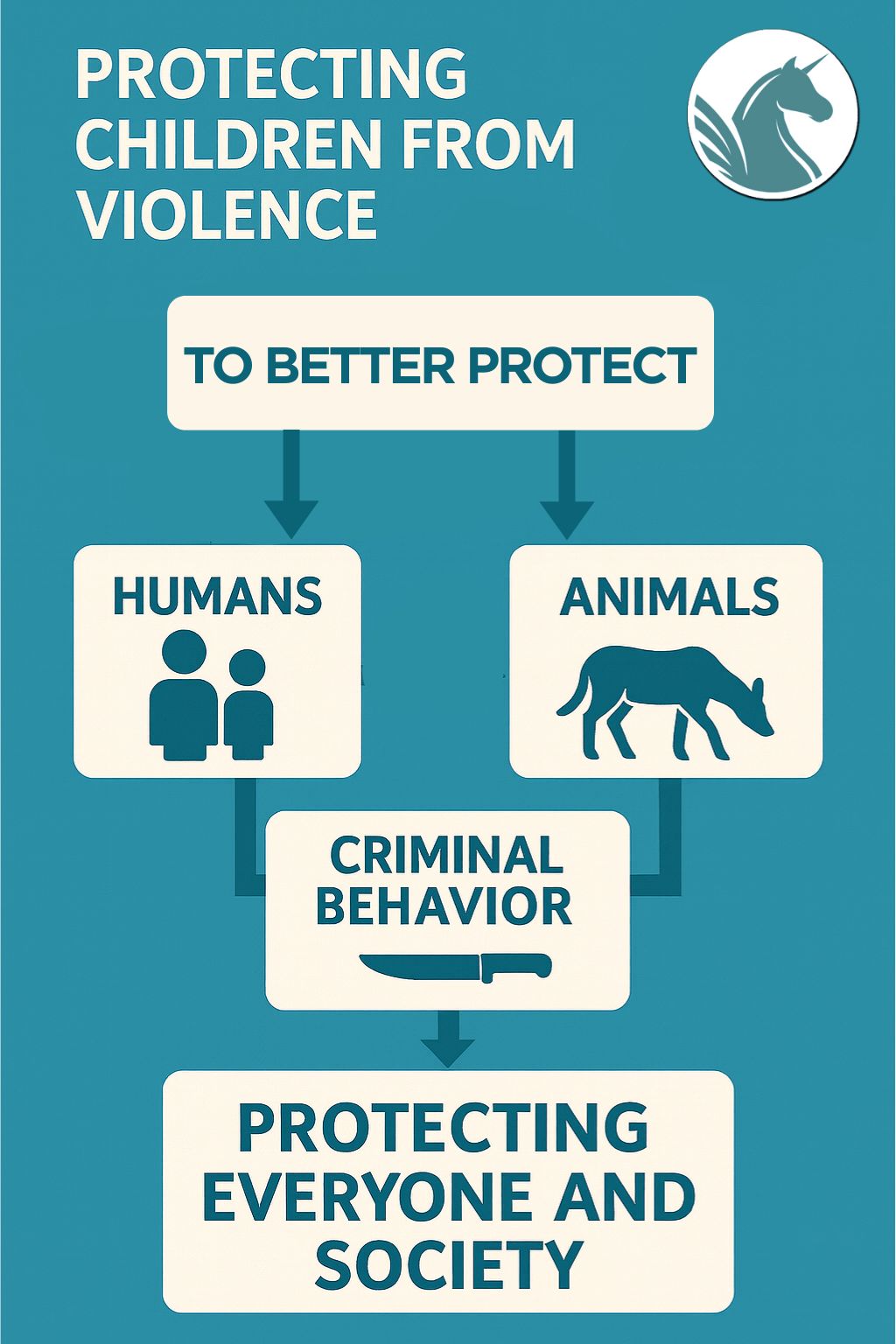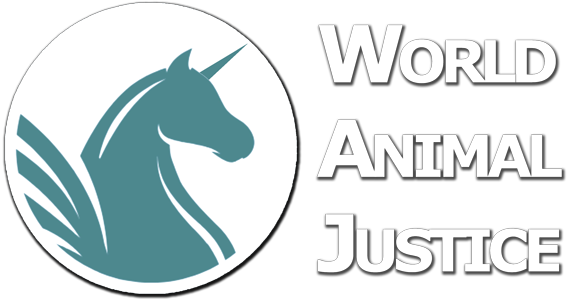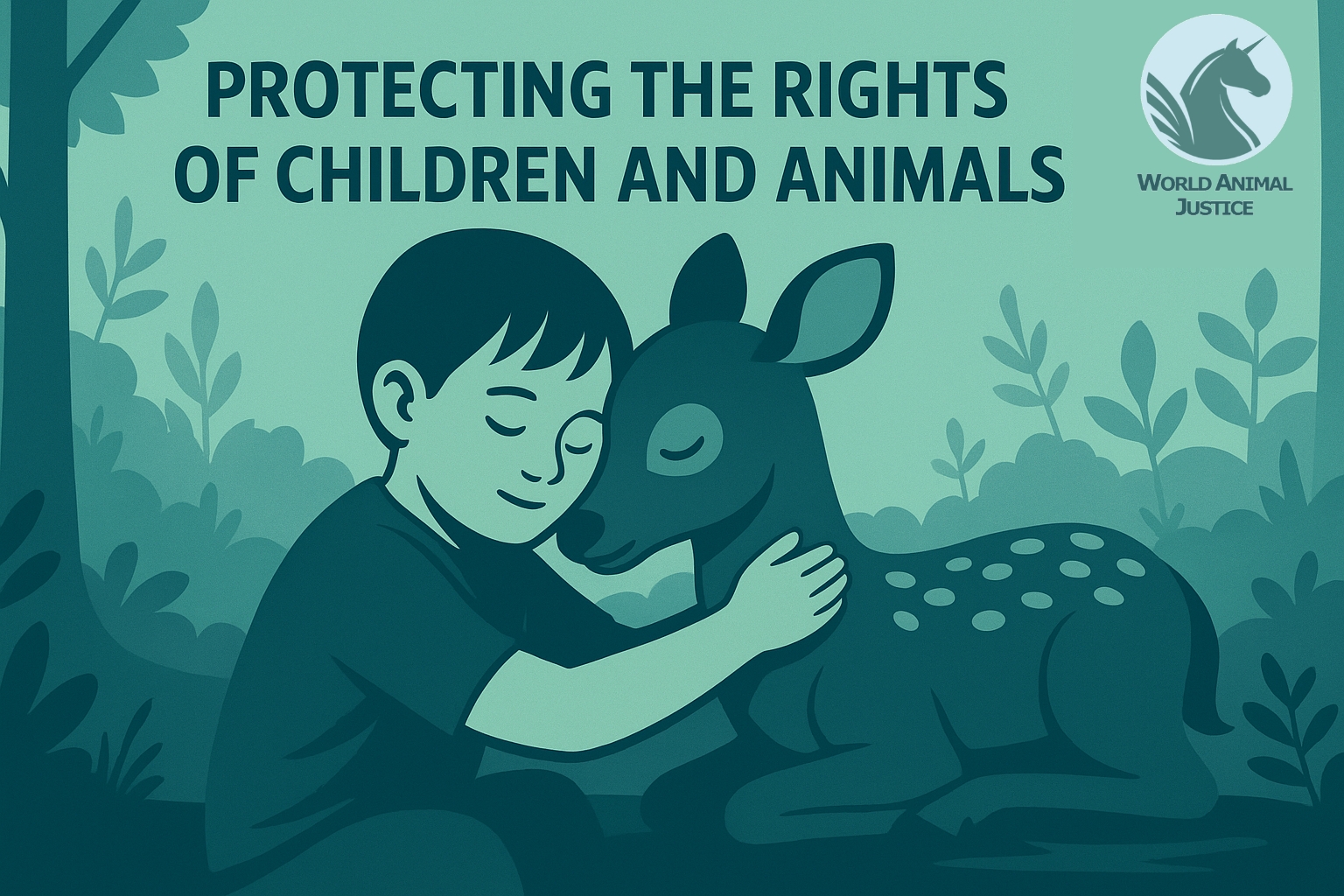Introduction
The United Nations Convention on the Rights of the Child (CRC) is one of the most widely ratified human rights treaties in history, binding almost all states under international law. Its provisions, particularly those concerning the protection of children from violence and the right to a healthy environment, offer a compelling legal foundation to challenge industrial animal agriculture. By invoking international legal obligations, advocates for animal justice and environmental sustainability can push for systemic change that benefits both children and non-human animals.
The Declaration of the Rights of the Child (1959) preceded the CRC by 30 years, establishing fundamental principles for child protection and well-being. While it was a non-binding declaration, it laid the groundwork for the legally binding Convention on the Rights of the Child (1989), which strengthened international obligations to safeguard children’s rights, including their protection from exposure to violence.
The Binding Nature of the CRC in Domestic Law
The CRC is legally binding on ratifying states, obliging them to uphold its principles within their jurisdictions. In monist legal systems, international treaties are automatically incorporated into domestic law, making them directly enforceable in national courts. This creates a unique legal avenue for advocacy, as violations of the CRC can be challenged directly within a country’s legal framework.
In dualist systems, however, the CRC requires implementing legislation before it can be invoked domestically, which affects how advocates frame litigation strategies.
Because nearly all UN Member States have ratified the CRC, it provides a universal normative foundation for accountability in areas affecting children’s health, development, and well-being.
Violence Against Animals as a Form of Violence Against Children
Article 19(1) of the CRC requires states to protect children from “all forms of physical or mental violence.” In its General Comment No. 26 (2023), the Committee on the Rights of the Child explicitly recognizes “violence inflicted on animals” as a form of exposure to violence that children must be protected from. In other words, General Comment No. 26, para. 35, clarifies that exposure to such violence constitutes a violation of children’s rights under Article 19. (United Nations Digital Library)
One potential legal argument is that children’s exposure to the routine killing, processing, and consumption of animals in industrial food systems constitutes exposure to violence. Seeing the dismembered body parts of animals on their plates, visiting industrial farms, or witnessing animal slaughter contributes to the desensitization of children to violence. Under the CRC framework, such exposure could be argued as a violation of children’s right to protection from psychological harm.
This argument aligns with a growing body of interdisciplinary research showing that exposure to violence against animals can desensitize children and contribute to long-term psychological harm.
Environmental Degradation as Structural Violence Against Children
The Committee on the Rights of the Child further expands the definition of violence by recognizing environmental degradation, including the climate crisis, as a form of structural violence against children (General Comment No. 26, Paragraph 35). This is a landmark acknowledgment that states’ failures to address industrial agriculture’s environmental impact are not just policy oversights but violations of children’s rights. (United Nations Digital Library)
The environmental destruction caused by industrial animal agriculture—including deforestation, greenhouse gas emissions, biodiversity loss, and water pollution—directly threatens children’s health and future well-being. The Committee links environmental rights to multiple fundamental child rights:
- Right to life, survival, and development (Article 6)
- Right to the highest attainable standard of health (Article 24)
- Right to an adequate standard of living (Article 27)
- Right to education, including respect for the natural environment (Article 29)
These provisions strengthen the case that states must take urgent action to transform industrial agriculture to protect children from environmental violence.
These connections reinforce that environmental harms caused by industrial animal agriculture constitute rights violations, not merely environmental policy failures.
The Obligation to Transform Industrial Animal Farming
Paragraphs 63 and 65 of General Comment No. 26 affirm that states must “immediately take action” to “transform industrial agriculture and fisheries to produce healthy and sustainable food.” This statement suggests that states have a legal duty to implement fundamental reforms in food production systems to ensure environmental and human health. (United Nations Digital Library)
A failure to take such action could be legally challenged in monist jurisdictions on the basis that states are breaching their obligations under international law. A claim could be brought arguing that the continuation of industrial animal agriculture violates children’s rights to a clean, healthy, and sustainable environment and that governments have a duty to transition to plant-based or sustainable alternatives.
Such litigation strategies are increasingly plausible as more jurisdictions begin recognising environmental rights as enforceable human rights, strengthening the legal basis for CRC-based claims.
The UN Committee on the Rights of the Child and Bullfighting
The UN Committee on the Rights of the Child has repeatedly expressed concerns about the negative impact of children attending or participating in bullfighting. The Committee has called on Spain, Portugal, and France to take legislative action to protect minors from exposure to these activities.
Spain
In 2018, the Committee recommended that Spain prohibit individuals under 18 from both participating in and attending bullfighting events. It emphasized the need to protect children from the potential psychological and physical harm caused by exposure to such violent spectacles. (The Guardian)
Portugal
In 2015, the Committee raised concerns about children in Portugal attending or engaging in bullfighting. It highlighted the possible negative effects on their moral development and urged the Portuguese government to limit children’s involvement in these events. (European Parliament)
France
The French Senate debated a bill in November 2024 that sought to ban children under 16 from attending bullfights and cockfights, citing psychological harm. However, the bill was rejected, reflecting the ongoing debate between cultural tradition and child protection. (30 Millions d’amis)
While bullfighting was removed from France’s cultural heritage list in 2015, the French government continues to fund bullfighting, despite 87% of the French public opposing it. (IFOP Poll, The Dodo)
European Union
Each year, the bullfighting industry receives approximately €200 million in public subsidies from the EU, helping to sustain practices widely regarded as cruel. Bullfighting is banned in 23 of the 27 EU Member States, and only partially permitted in Spain, Portugal, and France, where it continues solely for “traditional” reasons despite its recognized cruelty (Parliament Magazine).
-> Petition to Stop EU Susidies to bullfighting HERE.
The Concept of ‘One Violence’: Interlinking Violence Against Animals and Humans
The concept of ‘One Violence’ recognizes the interconnectedness of violence against animals and violence against humans, including children. Studies and advocacy efforts in domestic abuse contexts have long demonstrated a correlation between animal abuse and child abuse or intimate partner violence. Witnessing or participating in acts of violence towards animals can normalize aggression, desensitize individuals to suffering, and increase the likelihood of further violent behaviors.
This framework extends to structural violence in industries such as factory farming, bullfighting, and trophy hunting. By acknowledging that violence against animals contributes to a broader culture of violence, the Committee on the Rights of the Child reinforces the need to protect children from exposure to such harmful practices. The General Comment No. 26 (2023) underscores that safeguarding children from violence includes shielding them from witnessing or being involved in the exploitation of animals. (World Federation for Animals)
During a review of South Africa’s compliance with child rights in January 2024, the Committee expressed serious concerns about children’s involvement in trophy hunting, urging the government to take action. (Humane World)
This aligns with a broader global shift recognising that violence is systemic and interconnected, and that protecting children requires reducing societal exposure to all forms of violence, including violence against animals.
Conclusion
The CRC provides a powerful legal framework to challenge the status quo of industrial animal agriculture, bullfighting, and trophy hunting. Recognizing both violence inflicted on animals and environmental degradation as structural violence against children, the CRC creates a legal foundation for compelling governments to act. The ‘One Violence’ framework further solidifies the interconnected nature of human and animal suffering, advocating for a holistic approach to preventing violence. By holding states accountable under international law, we can advocate for a world where both children and animals are protected from traumatic violence and abuses.
Crucially, protecting children from exposure to violence against animals is not only a matter of safeguarding their present well-being, but also an essential step in preventing the normalization and reproduction of violence in the adults they will become. Ensuring that today’s children do not grow up desensitized to the suffering of animals is therefore fundamental to building more compassionate, peaceful, and just societies for tomorrow.
Call to Action
Because the UN Convention on the Rights of the Child (CRC) is the most universally ratified human rights treaty in the world — binding in 196 countries — lawyers and advocates in virtually every jurisdiction can rely on it to protect children from exposure to violence against animals. This global enforceability makes the CRC one of the strongest legal tools available to challenge harmful practices involving animal cruelty.
We call on all lawyers, advocates, and defenders of children’s rights to act now: challenge and oppose any practice that exposes children to violence against animals. Silence enables harm — action can prevent it.
We call on lawyers, advocates, and child-rights defenders to take action when children are exposed to violence inflicted on animals in activities such as hunting, bullfighting, cockfighting, rodeos, and other cruel spectacles. These exposures are not culturally neutral: they normalize harm, weaken empathy, and endanger children’s psychological development, while reinforcing cycles of violence that later manifest in society. Litigating such cases — by invoking the CRC and General Comment No. 26 — is a powerful way to protect children, raise awareness of animal torture and suffering as forms of violence, and reaffirm that cruelty against animals is harmful, unjustifiable, and must be recognized as part of the broader cycle of violence that all societies have a duty to end.
Lawyers, advocates, and defenders of children’s rights can — and must — act now: challenge and oppose any practice that exposes children to violence against animals. Silence enables harm. Action prevents it.
A special thanks to WAJ Expert Zannis Mavrogordato for his key inputs regarding the General Comment 26 of the UNCRC.



